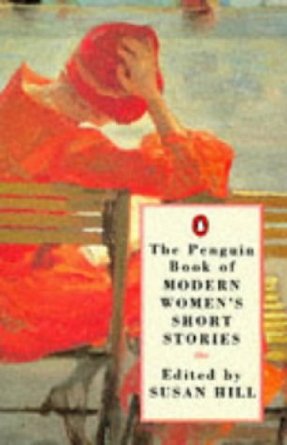
photo by Darren Johnson
In his essay, shortlisted for the 2014 THRESHOLDS International Short Fiction Feature Writing Competition, Stephen Devereux explores ‘The Man Who Kept the Sweet Shop at the Bus Station’ by evasive author Helen Harris.
*
Comments from the judging panel:
‘An engaging essay about a story that breaks all the usual conventions’; ‘I loved the writer’s fascination with obscurity’; ‘a particularly intriguing story choice’.
*
by Stephen Devereux
‘The Man Who Kept the Sweet Shop at the Bus Station’ by Helen Harris was the story that stood out most, for me, in the The Penguin Book of Modern Women’s Short Stories. But when I decided to write an essay about the story, I did a little research on Helen Harris and I drew a blank. I encountered others on Google who were also trying to track her down as the author of this particular story. One had contacted Penguin, to no avail. There are books by a Helen Harris out there – but this is not the same Helen Harris who wrote ‘The Man Who Kept the Sweet Shop’.
So why should we be interested in this apparently one-off story by an obscure writer? Well, I would suggest that its six pages contain something of a quiet revolution in the art of story writing, from which others could gain many insights. Short stories have characters, right? This one doesn’t. And one of them is the central character, yes? Not in this story. And short stories have plots, don’t they? Well there’s a plot of sorts, I suppose, though it isn’t very structured.
I’ll begin again with what is in the story. At its heart is a group of school girls. Nothing too surprising about that, but stories about groups of individuals usually differentiate the characters, give them their own identities, their own destinies. In this story, it is the group as a group that is the subject of the story. When we are given a little bit of information about one of them, she is viewed from the perspective of the group. We are told nothing about their home lives and not much more about their school lives. For most of the story they are either at the bus stop or on the bus.
The opening sentence – ‘The man who kept the sweet shop at the bus station was disappointing, years afterwards’ – makes it clear that it is the difference between what the girls were and what they have become that is the focus of the story. And what they remember (what most of us remember) is the time they were together as a group beyond the control of teachers and parents.
At the end of the story they are no longer a group. They pass through the small town and its bus station as separate individuals, ‘their minds on flats in Bayswater and handbags’. The dissolution of that little group is the understated plot of the story, if we have to have a plot. And it’s the same kind of plot that we find in vast novels.
The group of girls is depicted through the tiniest details, often relating to the sweets they relished, which caused them to spit ‘emerald saliva onto the tarmac’. Their collective identity on the back seat of the bus is evoked with precision:
They led a rich conversational life on the long back seat. The cigarette smoke, the bodies and the shopping baskets made a solid wall between them and propriety.
They ‘tore the paper off their chocolate bars with dexterous teeth. They didn’t mind touching one another, which they absolutely loathed at school’. They liked ‘the steamed-up windows and the bouncing, the cramped, red chenille and the body smell. Awash with conspiracy, they created interest.’ It is as if the story is narrated by the collective consciousness of the group, a consciousness that understands exactly what it was like to be in that place at that time.
Always the pronoun ‘they’ dominates. Mary Hunniwell is mentioned, not because she is a defined character, but because she behaves differently in the sweet shop, making the others wish that she ‘would stay outside in the car park’. She, Anthea Judd and Sarah Whitaker are mentioned later, but their function is a shared one; each simply expresses an opinion about the sweet shop man. The collective appearance is emphasised by their names appearing in brackets after each comment: ‘“It’s his eyes which get me. I think they’re icy and piercing.” (Anthea Judd)’
And what about the sweet shop man? Isn’t he the central character? Only in so far as he is a cipher, a blank by which the behaviour of others is revealed. We discover that the speculations and fantasies projected upon him constitute the glue that holds the group together.
It is almost as if the group of girls first try out various individuals for this essential role. The school chaplain won’t do because he ‘wasn’t a man, not completely’. ‘Sticky-eyed Bert, the gardener … didn’t count; already separated from them by an unbridgeable social gulf’. This class barrier is superbly symbolised by the school’s windows as he is ‘servilely mowing the lawns in full view of a history lesson’. Slimy Pete the bus drive won’t do because he is too young and, significantly, ‘because they couldn’t all watch him’.
The girls select the sweet shop man for the role for a plethora of reasons. He is the supplier of the sweets that are central to the group’s rituals of togetherness. There is something primitive about his shop, which is described as being in a dark, metal building that was delivered on a lorry. There was a private room at the back, ‘where God knows what he did’. His secret space provides mystery. And he is scary: ‘there would be a tingling moment of expectation before his shadow fell across the doorway.’
We are told that, years later, when ‘they came down for weekends on the London coach’ they saw a new, fashionable coffee shop and ‘imagined they envied today’s High School girls, sophisticatedly nibbling wholemeal parkin and health bars’. And yet, having arrived at the sophisticated adulthood they yearned for as schoolgirls, they discover that it is the earlier versions of themselves that they yearn for now.
It cannot be denied that there is a strong sexual element to the girls’ interest in the sweet shop man. It is nothing like teenage crushes on members of boy-bands, however; he is not attractive in any normal sense of the word. But May Hunniwell is temporarily expelled from the group because she describes him as ‘sordid’ and leering at her. She almost flirts with him, asking, ‘When are you going to give us a discount then?’ and his response is disturbing, to say the least: ‘“What would you give me in return, dearie?” White spit came into the corners of his mouth when he spoke.’
The acknowledgements in The Penguin Book of Modern Women’s Short Stories cites New Stories 5 (1980) as the source for the ‘The Man Who Kept the Sweet Shop’ and it is possible to imagine that a story about such a man being attractive to schoolgirls could have been written and published without censure in 1980. Harris freely explores the ways in which a group of schoolgirls use their fantasies about this repulsive/attractive man to create a unique group identity. After the Mary Hunniwell incident, the girls decided that ‘he was probably a pervert’.
He had an ordinary, thin face, he wore normal clothes. But there was definitely something suspicious about his cramped shop, with the drowsy smell of cachous and the crackling paper, that made them need to go in there every day of term.
In a marvellous sentence, Harris defines precisely for us the origins of the group’s fascination: ‘They used that aching journey home, through pole-axed villages and wet fields, to transform their emptiness into enigma.’ They transfer onto  the sweet shop man the aspects of adult life that scare and fascinate them most. He was guilty ‘of crime, sex crime’. He was ‘hiding from someone who was strong, who bore him a grudge, he was on drugs, he was a secret agent’.
the sweet shop man the aspects of adult life that scare and fascinate them most. He was guilty ‘of crime, sex crime’. He was ‘hiding from someone who was strong, who bore him a grudge, he was on drugs, he was a secret agent’.
The last two pages of the story describe, with the same economy and precision of language, how the group’s identity dissolves. ‘One by one’ the girls move forward on the bus to sit with boys from another school. ‘They began Sixth Form and dieting.’ They stopped eating sweets. ‘They discovered their submerged hatred of the glum, provincial town; scuffed their heels along its pavements and lounged sulkily against its walls.’ Now, if they returned to the town at all, the bus station ‘had nothing interesting for them’. They might occasionally run to the sweet shop for cigarettes or newspapers. The mythic status of the sweet shop man, whilst gluing the group together, is also an index of the inevitable changes taking place within them.
Only in the last two paragraphs does the perspective shift to the sweet shop man’s view of the girls. We discover his complex attitude, his awareness of how they regarded him. It comes as a shock to the reader to discover that he is nostalgic about how the girls used to be. It hurts him that they pretend not to remember him: ‘He could see the pretence in their averted eyes and their casual gestures.’ We are told that he would come out of his little room panting on purpose, that it was ‘a daily game he played’ because he found them stuck up and condescending. What they perceived as his pervy comments, he saw as teasing them ‘gently in revenge’ for being posh and stand-offish.
He also defines the changes in the girls for the reader, seeing them in a way they cannot see themselves: ‘The schoolgirls’ faces came back hidden in new shapes, bought grown-up magazines, snapped “Twenty Marlborough”.’
Not long ago, I tentatively tried the story out on an A-level English Literature writing class, inevitably mostly girls. None of them reacted in the way that I had feared, but responded to the precision in which the phase of life they had just gone through was depicted. They warmed to the story, aspired to write themselves about difficult things with the same degree of accuracy. If it upset any of them, it was because of the way in which their own futures seemed to be predicted in the fate of the girls who went away to work, to university, to marriages and away from their homes, their friends, their identities.
There are comparisons between Harris’ technique and Raymond Carver’s precision and focus on the apparently inconsequential. James Kelman’s stories about unemployed men in Glasgow are similar in their claustrophobia and seeming lack of structure. But I sense a humanity in Harris’ story that has more in common with Chekhov than with Carver or Kelman. Even Chekhov, however, never went so far as to abandon the need for heroes and villains, or to substitute a cast of defined individuals for a group collective.
So, Helen Harris, if you happen to be reading this…
~
Sweets photo by Paul Townsend


2 thoughts on “Where Are You Helen Harris?”
Comments are closed.